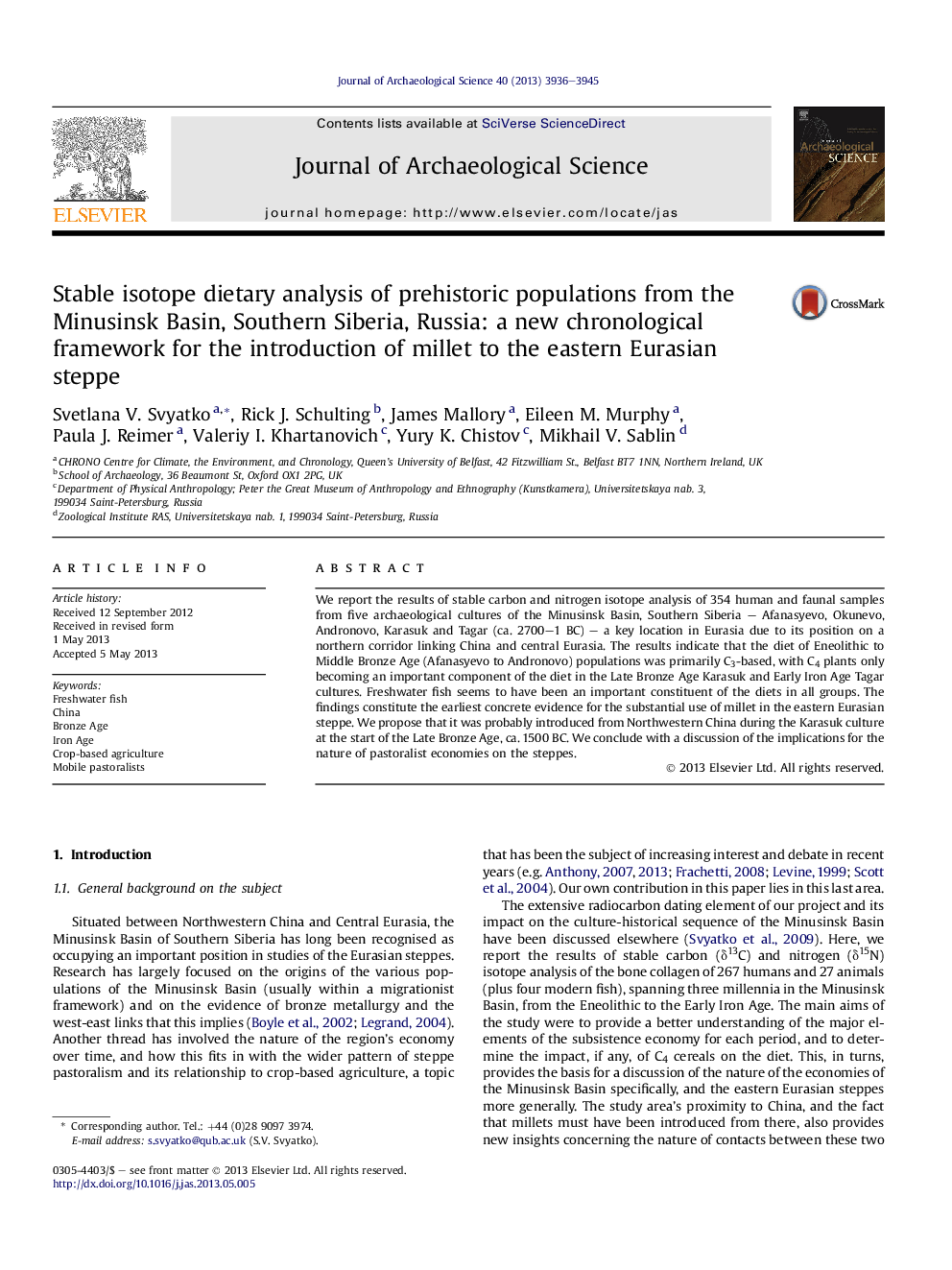| کد مقاله | کد نشریه | سال انتشار | مقاله انگلیسی | نسخه تمام متن |
|---|---|---|---|---|
| 10498879 | 943845 | 2013 | 10 صفحه PDF | دانلود رایگان |
عنوان انگلیسی مقاله ISI
Stable isotope dietary analysis of prehistoric populations from the Minusinsk Basin, Southern Siberia, Russia: a new chronological framework for the introduction of millet to the eastern Eurasian steppe
دانلود مقاله + سفارش ترجمه
دانلود مقاله ISI انگلیسی
رایگان برای ایرانیان
کلمات کلیدی
موضوعات مرتبط
مهندسی و علوم پایه
مهندسی مواد
دانش مواد (عمومی)
پیش نمایش صفحه اول مقاله

چکیده انگلیسی
We report the results of stable carbon and nitrogen isotope analysis of 354 human and faunal samples from five archaeological cultures of the Minusinsk Basin, Southern Siberia - Afanasyevo, Okunevo, Andronovo, Karasuk and Tagar (ca. 2700-1 BC) - a key location in Eurasia due to its position on a northern corridor linking China and central Eurasia. The results indicate that the diet of Eneolithic to Middle Bronze Age (Afanasyevo to Andronovo) populations was primarily C3-based, with C4 plants only becoming an important component of the diet in the Late Bronze Age Karasuk and Early Iron Age Tagar cultures. Freshwater fish seems to have been an important constituent of the diets in all groups. The findings constitute the earliest concrete evidence for the substantial use of millet in the eastern Eurasian steppe. We propose that it was probably introduced from Northwestern China during the Karasuk culture at the start of the Late Bronze Age, ca. 1500 BC. We conclude with a discussion of the implications for the nature of pastoralist economies on the steppes.
ناشر
Database: Elsevier - ScienceDirect (ساینس دایرکت)
Journal: Journal of Archaeological Science - Volume 40, Issue 11, November 2013, Pages 3936-3945
Journal: Journal of Archaeological Science - Volume 40, Issue 11, November 2013, Pages 3936-3945
نویسندگان
Svetlana V. Svyatko, Rick J. Schulting, James Mallory, Eileen M. Murphy, Paula J. Reimer, Valeriy I. Khartanovich, Yury K. Chistov, Mikhail V. Sablin,